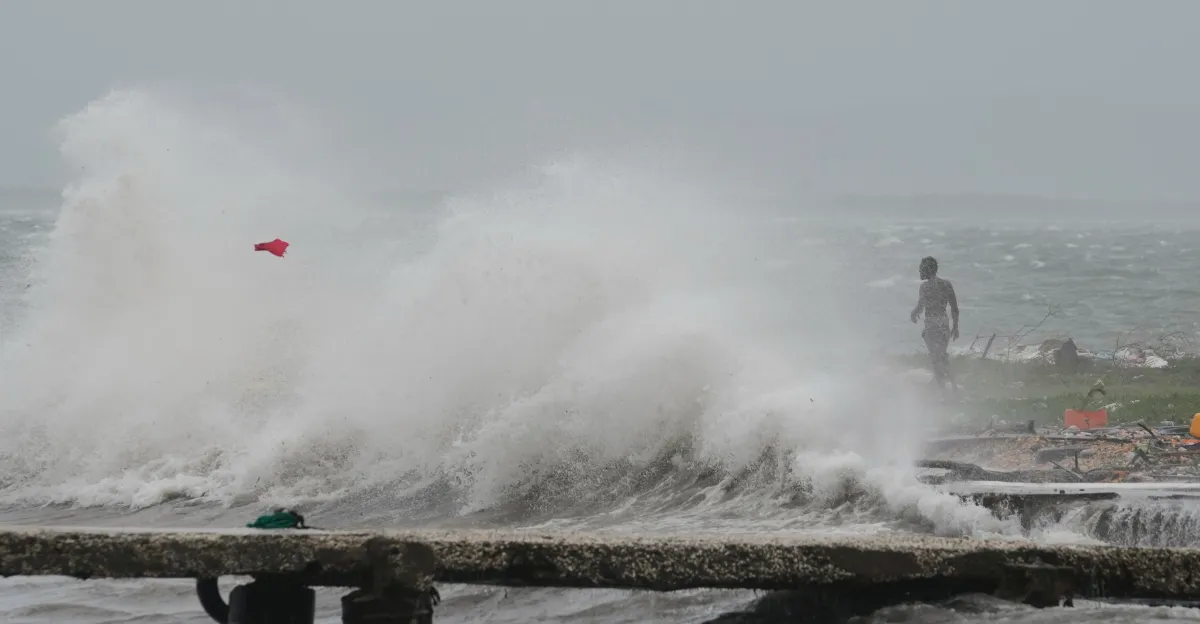
Hurricane Melissa has led to at least 50 deaths across the Caribbean as of Friday afternoon. It has now weakened into a post-tropical cyclone, veering eastward away from the Americas.
In its wake, the storm carved a massive swath of destruction across Jamaica, Haiti, and Cuba as it lashed the region with howling winds and torrential downpours. For Jamaica, Melissa was the strongest hurricane the island had experienced on record when it made landfall on Tuesday with winds at 185 miles per hour, putting it firmly in Category 5.
”We have never had a Category 5 hurricane in our country,” Dana Morris Dixon, Jamaica’s minister of education, skills, youth, and information said at a news conference Friday. “The devastation in the west is unimaginable.“
Ahead of of its arrival, the National Hurricane Center issued a blunt warning for Jamaica: “THIS IS AN EXTREMELY DANGEROUS AND LIFE-THREATENING SITUATION! TAKE COVER NOW!”
Hurricane Melissa has been an extraordinary storm, even among the many massive, fast-growing, devastating cyclones that have been erupting in the Atlantic Ocean in recent years.
The hurricane caused landslides, power outages, and flash floods, and the death toll is likely to climb higher as rescuers reach towns cut off by damages from the storm and begin to search for the missing.
It’s clear that Melissa will leave a lasting scar on the islands in its path. It’s likely to be the strongest tropical cyclone in the world this year. “For Jamaica, it will be the storm of the century for sure,” World Meteorological Organization tropical cyclone specialist Anne-Claire Fontan told reporters in Geneva, Switzerland.
As Melissa fades away, here are a few key things to keep in mind:
Melissa was unusually big and powerful
It’s hard to overstate just how powerful this storm was, and how quickly it erupted. Melissa is now tied with Hurricane Dorian in 2019 and the 1935 Labor Day hurricane as the strongest storm to ever make landfall, and certainly the strongest to hit Jamaica. The last time Jamaica took a direct hit from a hurricane was in 1988 from Gilbert.
Melissa also grew quickly. Its wind speed more than doubled in 24 hours, from 70 mph to 140 mph. The threshold for rapid intensification is wind speeds increasing by at least 35 mph in 24 hours.
A storm doesn’t have to be strong to be dangerous
A hurricane’s devastation doesn’t only come from its strong winds. Even a weaker cyclone can leave a trail of death and destruction when it hits a vulnerable area, and much of the lasting havoc comes from water, not wind. Earlier this year, the remnants of Tropical Storm Barry, for example, moved inland and collided with another weather system over Texas and triggered flash floods that killed at least 90 people.
Jamaica is particularly vulnerable because its mountainous geography can create the ideal conditions for flash floods. And as the country faces a housing shortage and rising prices that are driving many into substandard living conditions, increasing the human and property toll of the storm.
“There is no infrastructure in the region that can withstand a Category 5,” said Jamaican Prime Minister Andrew Holness in a news conference Monday.
Hurricane Melissa is coming at the tail end of a seemingly quiet season
Hurricane season officially runs from June 1 to November 30. In its early season outlook in May, NOAA anticipated a 60 percent chance of “above-normal” hurricane activity in the Atlantic Ocean this year, with up to 19 named storms and five of those turning into major hurricanes. The agency’s updated forecast in August slightly lowered the chances of above-normal activity to 50 percent. Forecasters saw that there was ample warm water in the Atlantic Ocean — a necessary ingredient for hurricanes — and atmospheric conditions that make it easier for cyclones to form.
From an American perspective, this season felt unusually quiet. There have been 13 named Atlantic storms this year so far. This year became the first time in a decade that no hurricane made landfall in the US by the end of September. But while most tropical storms in the Atlantic didn’t hit the US, several did strike the Caribbean. There were also major storms that churned out at sea and still caused houses to collapse in places like the Outer Banks in North Carolina. Melissa is the third Category 5 hurricane this year, after Erin and Humberto, making 2025 one of the most active years on record when it comes to the most severe storms.
”It’s been a busy season,” said Monica Medina, a former senior official at NOAA under President Barack Obama. “It’s just the storms have not hit the US.”
While the season as a whole may have seemed unusually calm before Melissa, there’s still another month to go, and the fuel for another massive storm remains ready.
And historically, some of our most catastrophic storms hit during unusually quiet seasons. “There’s this old phrase: All it takes is one,” said Michael Fischer, an assistant professor at the University of Miami studying hurricane modeling. Fischer noted that hurricane activity in 1992 was significantly below average, but that was the year Hurricane Andrew struck Florida and became, at the time, the costliest storm to hit the US, causing $26 billion in damages. Hurricane Katrina in 2005 broke that record with more than $100 billion in damages during a more active season. “We have to be careful before we make assessments of this hurricane season,” Fischer said. “So far it’s been a bit, perhaps a bit quieter than what was expected in terms of the total number of named storms, but the book is not done being written yet.”
Update October 31, 3:45 pm ET: This story was originally published on October 29 and has been updated multiple times with new reporting on Hurricane Melissa.









